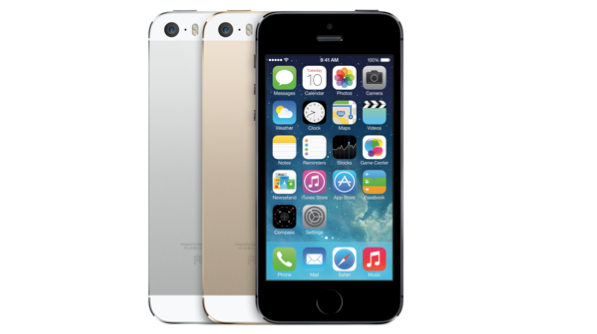Why you can trust TechRadar
The iPhone 5S is nothing more than the 5 when it comes to calling, but with iOS 7 on board as well as a few more LTE bands, it means that it can function on pretty much any next-gen network around the world.
If you're in Australia, this means that you'll be able to connect to 4G on the likes of Vodafone, Telstra and Optus all without a worry.
The only catch is the Optus 4G+ network, which uses TD-LTE technology, as opposed to the FDD-LTE everyone else uses.
The good news is that the version of the new phone on sale in Australia is capable of working on both TD-LTE and FDD-LTE networks.
Even customers buying a phone through Telstra or Vodafone will be able to enjoy the Optus network should they switch carriers down the track.
The only real concern is for anyone who buys their iPhone via a parallel importer. Given the multiple versions of the phone for different global LTE networks, there's a chance that overseas models won't work with the Optus network.

However, there's a real feel that the iPhone 5S is a handset designed to be enabled with 4G more than its predecessor – although running at the faster connection does seem to cook the battery somewhat.
Sign up for breaking news, reviews, opinion, top tech deals, and more.
Calling
The call quality on the iPhone is nothing to shout about, with the slightly sharper edges of the phone making it even harder to hear people due to reticence to push it closer to your ear hole.
The sound quality emanating from the earpiece is decent without being stonkingly clear and there's not much in the way of audio enhancement to play with. It's worth noting that on rival handsets there's always a lot more that you can do to improve things in this respect.
In terms of the other person being able to hear you, things are a lot more impressive, thanks to the three microphones that enable excellent noise cancellation and are able to pick up a wide level of what you're trying to say.

But therein lies the rub - is that too simplistic? To one person, being able to calibrate the sound levels of the Samsung Galaxy S4 is a great thing to be able to do, and they'll do so willingly. With the iPhone, many prefer simplicity, so the ability to be able to just press a button, make a call with a nice interface and move on will impress many.
There's no smart dialling here though - that really irks as it's an excellent method of getting to your contacts through the dial pad. Android 4.3 now has it baked into the OS, and it feels high time Apple did the same thing.
The Phone app has been updated slightly too with iOS 7.1, with the buttons now turned from large coloured rectangles to circular buttons to match the dialling pad - it's a subtle change that we didn't really care about, but does look more aesthetically pleasing.
Maybe Sir Ive was bored in a meeting and re-tooled them.
Facetime has been given a cheeky boost too thanks to the improved front camera, which displays really fast and clear images provided you've got a strong enough connection.
Is it ever going to take over the world in the way voice calling did? Nope, not even with an HD front facing camera. It's better though, and really helps with those lonely hotel trips.
Contacts
The contacts on the iPhone are still rather dismal, and still something that Apple needs to address. We want far more than the list of contacts on offer, despite the list of letters at the side of your address book being very easy to slide down.

It's a lot better than it was, allowing you to enable Facebook and Twitter to update your contacts book with pictures of friends when all the data matches.
But compare that to pretty much any Android phone now and you'll see the disparity: here you have to hope that things match in terms of email or other information and the iPhone will deign to connect them together.
If this fails, it's far from simple to have everyone matched up, so no high res profile pics, no updates on what your friends are doing from within the app, and generally not a lot going on at all.
Apple could do so much more with the matching here, but it's a sticky mess if you want to link anyone together.
It's not a bad contacts system, it just could (and probably will) be so much better in the future.

Gareth has been part of the consumer technology world in a career spanning three decades. He started life as a staff writer on the fledgling TechRadar, and has grew with the site (primarily as phones, tablets and wearables editor) until becoming Global Editor in Chief in 2018. Gareth has written over 4,000 articles for TechRadar, has contributed expert insight to a number of other publications, chaired panels on zeitgeist technologies, presented at the Gadget Show Live as well as representing the brand on TV and radio for multiple channels including Sky, BBC, ITV and Al-Jazeera. Passionate about fitness, he can bore anyone rigid about stress management, sleep tracking, heart rate variance as well as bemoaning something about the latest iPhone, Galaxy or OLED TV.
